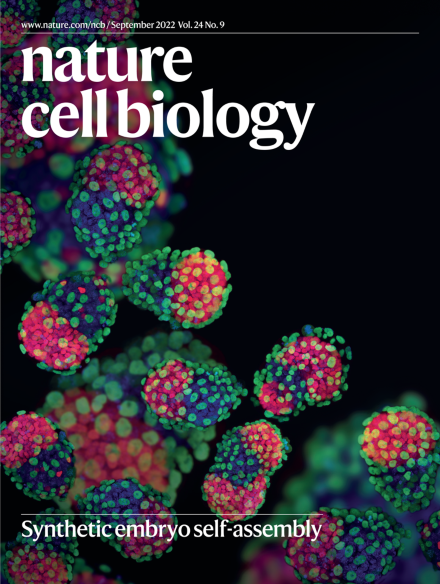膜受体聚集磷脂酰丝氨酸激活lc3相关吞噬。
IF 19.1
1区 生物学
Q1 CELL BIOLOGY
引用次数: 0
摘要
LC3相关吞噬(LAP)是自噬蛋白的一种非规范功能,其中atg8家族蛋白(LC3和GABARAP蛋白)被脂化到单膜吞噬体上,颗粒被吞噬细胞吞噬。LAP在先天免疫、炎症和抗癌反应中发挥作用,并在刺激toll样受体(TLR)和Fc受体的颗粒吞噬以及吞噬死亡细胞后启动。然而,这个分子过程是如何开始的仍然是难以捉摸的。在这里,我们报道了参与LAP的受体通过膜近端结构域富集吞噬体膜中的磷脂酰丝氨酸(PS),这是LAP进行所必需和充分的。随后,PS招募含有rubicon的pi3激酶复合物,启动导致LAP的酶级联反应。操纵质膜PS含量、Rubicon结合PS或受体的PS聚集结构域可阻止LAP并延迟吞噬体成熟。因此,LAP的启动代表了表面受体连接后ps介导的信号转导的新机制。本文章由计算机程序翻译,如有差异,请以英文原文为准。
Membrane receptors cluster phosphatidylserine to activate LC3-associated phagocytosis.
LC3-associated phagocytosis (LAP) represents a non-canonical function of autophagy proteins in which ATG8-family proteins (LC3 and GABARAP proteins) are lipidated onto single-membrane phagosomes as particles are engulfed by phagocytic cells. LAP plays roles in innate immunity, inflammation and anticancer responses, and is initiated following phagocytosis of particles that stimulate Toll-like receptors (TLR) and Fc receptors as well as following engulfment of dying cells. However, how this molecular process is initiated remains elusive. Here we report that receptors that engage LAP enrich phosphatidylserine (PS) in the phagosome membrane via membrane-proximal domains that are necessary and sufficient for LAP to proceed. Subsequently, PS recruits the Rubicon-containing PI3-kinase complex to initiate the enzymatic cascade leading to LAP. Manipulation of plasma membrane PS content, PS binding by Rubicon or the PS-clustering domains of receptors prevents LAP and delays phagosome maturation. Therefore, the initiation of LAP represents a novel mechanism of PS-mediated signal transduction following ligation of surface receptors.
求助全文
通过发布文献求助,成功后即可免费获取论文全文。
去求助
来源期刊

Nature Cell Biology
生物-细胞生物学
CiteScore
28.40
自引率
0.90%
发文量
219
审稿时长
3 months
期刊介绍:
Nature Cell Biology, a prestigious journal, upholds a commitment to publishing papers of the highest quality across all areas of cell biology, with a particular focus on elucidating mechanisms underlying fundamental cell biological processes. The journal's broad scope encompasses various areas of interest, including but not limited to:
-Autophagy
-Cancer biology
-Cell adhesion and migration
-Cell cycle and growth
-Cell death
-Chromatin and epigenetics
-Cytoskeletal dynamics
-Developmental biology
-DNA replication and repair
-Mechanisms of human disease
-Mechanobiology
-Membrane traffic and dynamics
-Metabolism
-Nuclear organization and dynamics
-Organelle biology
-Proteolysis and quality control
-RNA biology
-Signal transduction
-Stem cell biology
 求助内容:
求助内容: 应助结果提醒方式:
应助结果提醒方式:


